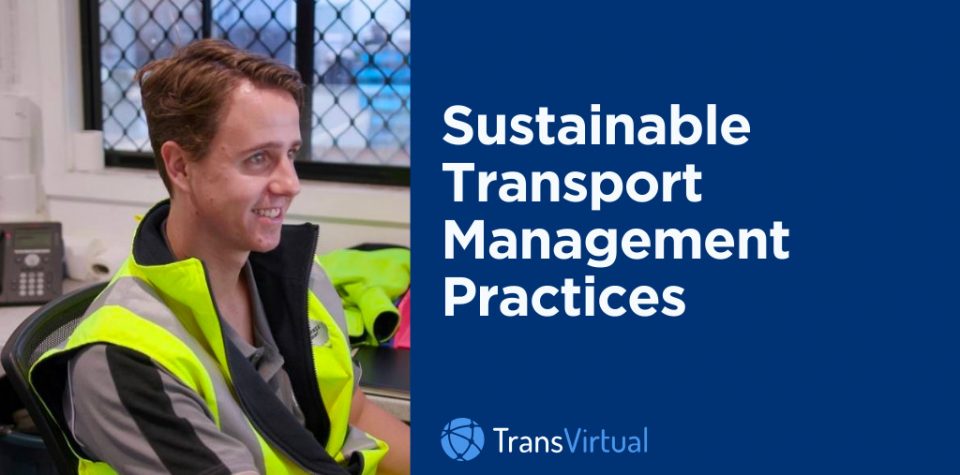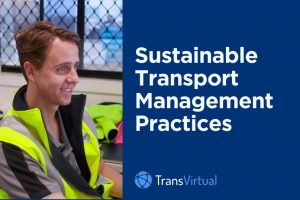Table of Contents
The transport and logistics industry, a cornerstone of the global economy, bears significant responsibility in guiding global efforts toward sustainable practices. As customers become more eco-conscious, the pressure mounts for companies to meet these expectations.
Purpose of this article
In this article, we’ll dive into sustainable logistics practices that not only minimise environmental impact, but also help you maintain efficiency within the supply chain.
Strategies for Sustainable Transport Management
Best Practices for Sustainable Logistics
1. Remember the 4R Strategy
We’re talking about reduce, reuse, recycle, and recover, of course.
Now, we can’t deny that implementing any of these four Rs is going to be an easy feat. But it’s all about finding solutions that you can administer throughout the supply chain:
a. Procurement: Choosing suppliers close to production sites, opting for returnable packaging, and working with suppliers that implement sustainable practices.
b. Manufacturing: Ensure efficient separation and recycling of manufacturing waste, design products that are built to last.
c. Distribution: Optimise routes (more on this later!), use recyclable shipping and packaging materials, and implement better load planning to reduce the number of deliveries.
The great news is that reusable packaging materials are now easily available for those in supply chain management. You can also start avoiding hazardous materials that can endanger the environment.
2. Route Optimisation
If you’re using a transport management system (TMS), you might want to leverage a handy feature called route optimisation.
Route optimisation, as you might guess, minimises unnecessary mileage, thereby reducing fuel consumption and carbon emissions.
It also has direct business benefits too!
Aside from the obvious fuel cost savings, avoiding congested traffic areas reduce vehicle idle times—allowing you to maximise your fleet. You also mitigate risks within logistics operations by identifying the most efficient and safest routes.
3. Leverage Collaborative Logistics
Collaborative freight operations allow shippers to efficiently fulfill freight orders by leveraging a network of carriers. Rather than having vehicles return with unused capacity, businesses can pool resources and coordinate shipments to ensure full loads, maximising efficiency and reducing waste.
4. Optimise Last Mile Delivery
Last-mile delivery is transporting a package from a fulfilment centre to its final destination. It’s the final step of the delivery process and is often the costliest. But we’re not just talking about financial costs. This phase is often associated with high emissions and traffic congestion, factors that harm our ecosystem.
Promote logistics sustainability by implementing strategy that reduce last-mile emissions. Here are a few ideas to get started:
- Reduce repeated delivery attempts with a TMS
A transport management system boasts features such as electronic proof of delivery (ePOD) to capture successful deliveries. This not only provides visibility into delivery status in real-time, it also greatly reduces the need for paperwork.
Another awesome feature you can reap from a TMS is that it sends delivery notifications and alerts to everyone, from the driver to the customer. This minimises miscommunication and reduces the likelihood of missed deliveries.
- Allow customers to set delivery windows
Provide customers with the flexibility to select preferred delivery time slots or windows that match their schedules. This tailored approach minimises missed deliveries and eliminates the need for multiple delivery attempts.
- Alternative vehicles
Cargo bikes, electric vehicles, there are several environmentally friendly and cost-effective alternatives to traditional delivery vehicles. Their reduced environmental impact and adeptness in manoeuvring through crowded urban environments make them an optimal choice for last-mile deliveries.
The road to last-mile sustainability shouldn’t be an impossible trip to make. Continue to optimise routes, utilise environment-friendly vehicles, and consolidate deliveries to reduce your carbon footprint.
Conclusion
Steer Your Business Towards a Greener Future
The logistics sector should lead the charge towards a more sustainable future. By taking a concerted effort to lessen their environmental impact, businesses play a vital role in safeguarding our planet for future generations.
Practice sustainable transport with TransVirtual
Take a proactive step towards sustainable transport practices with TransVirtual. Our Transport Management System boasts features such as route optimisation, ePOD, fuel management, and automatic invoicing to help you reduce your carbon footprint.


